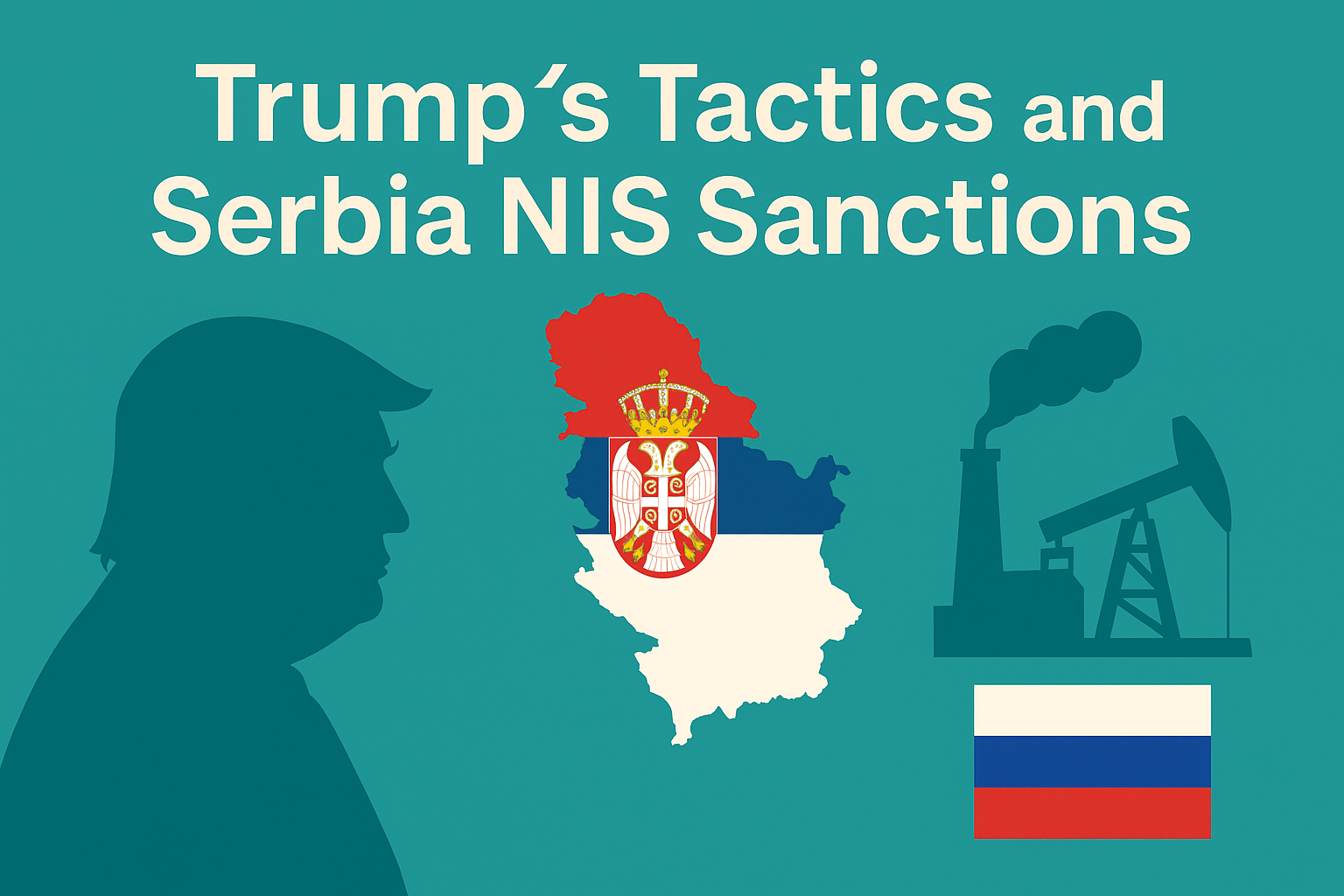Wrote By:Global Economist 2025/10
Introduction
On October 9, 2025, the United States formally enacted sanctions against Serbia’s leading oil company, Naftna Industrija Srbije (NIS). NIS operates the country’s only oil refinery and plays a central role in fuel distribution. This report examines the background and objectives of these sanctions, their implications for Serbia and the wider region, the strategic meaning from Russia’s perspective, and possible future scenarios.
1. Facts and Background
1.1 Sanctions Content and Enforcement
- In January 2025, the U.S. had already designated NIS as part of its broader sanctions against Russia’s energy sector.
- However, the sanctions only became effective in October 2025.
- According to Al Jazeera, NIS has not obtained any special license from the U.S. Treasury and must now operate under the full scope of sanctions.
1.2 NIS’s Role and Ownership Structure
- Serbia imports almost all its oil and gas via Russian pipelines, with NIS handling domestic refining and distribution.
- Gazprom Neft holds about 45% of NIS shares.
- The Serbian government owns approximately 30%, with the remainder held by minority shareholders.
- In addition, Gazprom transferred an 11% stake to a St. Petersburg–based company named Intelligence, suggesting nominal restructuring to dilute Russia’s visible control.
1.3 Serbian Government’s Position
- Serbia officially seeks EU membership but remains heavily dependent on Russian energy. It has refused to join Western sanctions against Russia.
- President Aleksandar Vučić warned that U.S. sanctions would primarily hit Serbia’s banking sector: “No bank in the world can ignore U.S. sanctions.”
- NIS predicted payment disruptions, including possible inoperability of foreign-issued cards, with a shift toward domestic cards and cash transactions.
- However, the company insisted that crude reserves were sufficient and fuel supply to gas stations remained stable.
1.4 Regional and Corporate Spillovers
- Croatia’s pipeline operator JANAF estimated potential losses of €18 million in 2025 due to reduced flows from NIS-related sanctions.
- Within Serbia, the sanctions could fuel political unrest, anti-government protests, and public discontent if fuel prices rise or access is restricted.
2. Meaning and Impact of the Sanctions
2.1 Objectives
- Pressure on Russia’s energy sector: Since the Ukraine war, the U.S. and allies have targeted Russia’s energy revenue streams and geopolitical leverage.
- Indirect pressure on Serbia: By striking at a Russian-controlled company, Washington indirectly nudges Belgrade toward alignment with Western sanctions.
- Signaling effect: A clear message to other states and firms that Russian-linked companies face sanctions risks regardless of borders.
2.2 Implications for Serbia
- Financial and payment disruptions: Slowed foreign currency settlements and cautious behavior from international banks.
- Fuel price and supply insecurity: Risk of chain disruption affecting households and inflation.
- Political stress: Likely intensification of opposition activity and anti-government sentiment.
- Strained EU relations: Sanctions complicate Serbia’s balancing act between EU accession goals and Russian ties.
2.3 Russia’s Strategic Perspective
- Diplomatic counter-narrative: Framing U.S. sanctions as coercion to boost anti-Western sentiment in Serbia and beyond.
- Sanctions evasion schemes: Leveraging ownership transfers, front companies, and nominal restructuring to sustain influence.
- Maintaining Serbia as a strategic hub: Keeping Serbia within Moscow’s orbit as a “last ally” in the Balkans.
2.4 Risks and Uncertainties
- Serbia may eventually sever Russian ownership ties under Western pressure.
- Operational difficulties at NIS could threaten national energy security.
- Broader spillover into neighboring countries’ energy networks and economies.
- Potential for additional sanctions or countermeasures by the EU and international community.
3. Outlook and Scenario Assumptions
| Scenario | Overview | Success Factors | Consequences for Serbia and Russia |
|---|---|---|---|
| A. Long-term sanctions, Russian retreat | Extended sanctions push Gazprom to divest | Domestic unrest, Western pressure | Russia’s influence weakens; Serbia leans West |
| B. Nominal restructuring, covert control | Gazprom shifts shares to proxies/front firms | Weak enforcement, creative evasion | Formal sanctions applied but real control persists |
| C. Negotiated relaxation | Serbia/NIS make concessions to U.S./EU | Diplomatic flexibility, reduced dependency | Partial relief; Serbia sustains balancing policy |
| D. Widening disruption, regional instability | Economic turmoil spreads to neighbors | Fragile regional infrastructure, protests | Broader instability, increased costs for Russia |
Note: These scenarios are not mutually exclusive; elements could evolve in parallel.
4. Policy Implications and Recommendations
- Diversify supply routes: Serbia must pursue pipeline diversification, LNG imports, and alternative bilateral supply contracts.
- Strengthen financial safety nets: Build resilience in domestic payments and foreign exchange liquidity.
- Keep negotiation channels open: Maintain dialogue with the U.S. and EU to seek waivers, exemptions, or phased compliance.
- Enhance transparency: Communicate clearly with citizens and businesses about fuel reserves, supply security, and contingency plans.
Conclusion
These sanctions go beyond punishing a Russian-owned company. They underscore Serbia’s geopolitical dilemma as a “borderland state” between East and West. For Serbia, the sanctions highlight the risks of deep dependence on Russian energy. For Russia, they are both a direct blow and a chance to exploit anti-Western narratives and sanctions loopholes to retain leverage.
Ultimately, the trajectory will depend on whether Belgrade chooses to recalibrate toward the EU and U.S. or whether Moscow successfully maintains control through proxy structures and political influence.


